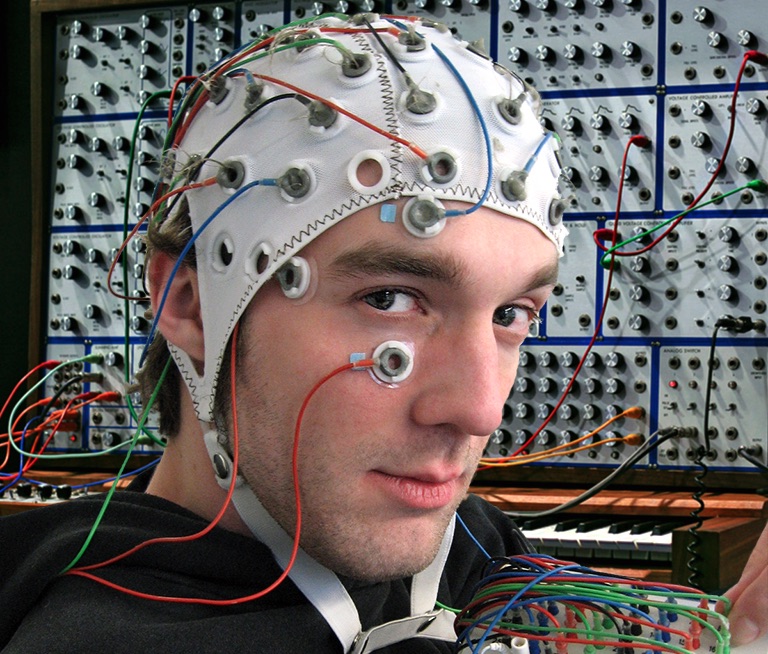Something terrible happened to Susan a few years before we met.
A random intruder shot her and left her for dead.
A bullet lodged deep within her chest. Emergency responders rushed her to the operating room and soon surgeons were struggling to control the bleeding in her collapsed lung.
At first no one saw the other wound.
Then an O.R. nurse noticed a small pool of blood near Susan’s head. A portable x-ray revealed a second bullet had pierced her skull and destroyed a significant amount of Susan’s brain.
Emergency surgery saved her life, but Susan was now blind. Her brain’s speech center had been devastated, and her motor function was severely impaired. A large piece of her skull was gone.
Susan couldn’t see. She couldn’t talk. She couldn’t walk.
However, after surgery, Susan soon regained consciousness. She couldn’t see or talk, but she could hear. So she was able to understand her neurosurgeon’s words when he stood at her hospital bedside and told her about the extent of her brain injury.
The news was devastating
The doctor explained that her brain was permanently damaged. Susan was told she would never see again; told she would have difficulty speaking for the rest of her life, told she would need to make arrangements for long-term nursing care and because she had been recently widowed, she would need to find full-time childcare for her 2-year-old son.
That was the bad news. The good news?
Susan would be severley disabled, but she would survive.
Perhaps – with years of physical therapy – her doctors said she might be able to learn to walk again. But, no promises.
She couldn’t speak, but one thought echoed through Susan’s mind: NO.
Why am I telling you this sad story?
Because by the time we met, Susan could walk.
She could talk.
And she could see.
In fact if you met Susan today, you would never guess that once upon a time, she had suffered permanent brain damage.
In case you’re doubting the seriousness of her brain injury, let me assure you Susan wasn’t exaggerating. The crime and subsequent trial had been big news in her part of the country. Before we met, I happened to read an in-depth article about the incident. Her recovery is nothing less than a medical miracle.
Yet Susan doesn’t consider herself special.
She’s not a motivational speaker. She hasn’t written a book or appeared on Oprah. She’s not famous; she’s a very private person, in fact ‘Susan’ isn’t her real name.
She’s a normal woman – a wife and mother who runs a thriving small business with her new husband. She’s not particularly religious – though she admits she’s a bit more spiritual now than before her injury.
The Power of the Positive No
One day I asked Susan what she thought might be the key to her miraculous recovery:
“That moment in the hospital when the doctor told me about my prognosis, I suddenly got very stubborn. I had no reason to believe my own opinion more than his, but for some reason I simply refused to believe him.”
She smiled as she told me how she just mentally said, “No” to everything he said. “I wasn’t in denial, she explained, “I knew my situation was very serious, and I couldn’t speak, so he had no idea. But I just found myself mentally saying ‘no’ to everything he said with simple, calm conviction.”
“You’ll never see again.”
No.
“You’ll always have problems speaking.”
No.
“You may never walk again.”
No.
Susan refused to accept her doctor’s description of her future. She cancelled the order.
Make it part of the dance.
Did I mention that before the injury, Susan had been a talented professional dancer?
She once told me that dancers have a rule:
“If you happen to stumble or make a mistake during a performance, a good dancer knows how to ‘make it part of the dance’ – and just keep on going.”
Susan made a decision to make her brain injury “part of the dance” of her life.
She’d stumbled but she chose to keep moving forward no matter what.
Susan took her physical therapy seriously. If she had a bad day, she remembered to ‘make it part of the dance.’ She worked hard to restore her ability to walk. She reclaimed her ability to talk. And somehow Susan found her own unique way to reconstruct her vision piece by piece. Today she sees well enough to read, drive, and look into the eyes of her son – without glasses.
Her doctors still can’t explain how she can do that.
I hope Susan’s story inspires you. If you’re dealing with a challenge such as a life-threatening illness or injury it’s helpful to remember that not everyone has the worst-case scenario your caregivers may be describing. Side effects of treatment don’t always occur. Your prognosis isn’t written in stone.
Perhaps you’ll follow Susan’s example and draw upon the power of your own mind to help yourself – and maybe even heal yourself.
You are more than your body. Your mind is stronger than your brain.
When someone tells you something will be difficult or painful, they’re programming your subconscious. It’s like a hypnotic trance. This is especially true if it’s a doctor or other authority figure.
People who’ve been told to expect serious side effects often will suffer them, even when the “medicine” is a harmless sugar pill. Studies have proven this.
It’s called the nocebo effect – the opposite of the placebo effect.
For better or worse, the mind has the power to create real physical results, even when it involves the brain.
Think about that for a minute.
So the next time experts tell you how bad things are going to be, I invite you to let your subconscious know YOU have other plans.
I’m not telling you to avoid medical treatment. If you are having a health challenge, of course see a doctor and follow her advice. You’re not saying no to the actual treatment.
But when experts tell you about bad things that may happen such as scars, pain, or negative side effects, I invite you to indulge in a harmless experiment and simply say a strong internal, NO!
This isn’t an argumentative “No.”
It isn’t a fearful “No.”
It’s the same thing you might say to a waiter offering you a platter of some food you don’t like to eat – a polite, yet firm,
“No thank you.”
I invite you to welcome the healing effects of your treatment, but firmly reject the rest of the side effects.
The power of the mind is amazing. Take advantage of it.
Related Articles:


